Mark Guttag is Making It! In this Q&A interview, the AAAS fellow discusses how he embraces his slogan: “What’s next?”
Advanced Materials & Manufacturing Technologies Office
July 17, 2024If Mark Guttag had a slogan, it might be: “What’s next?”
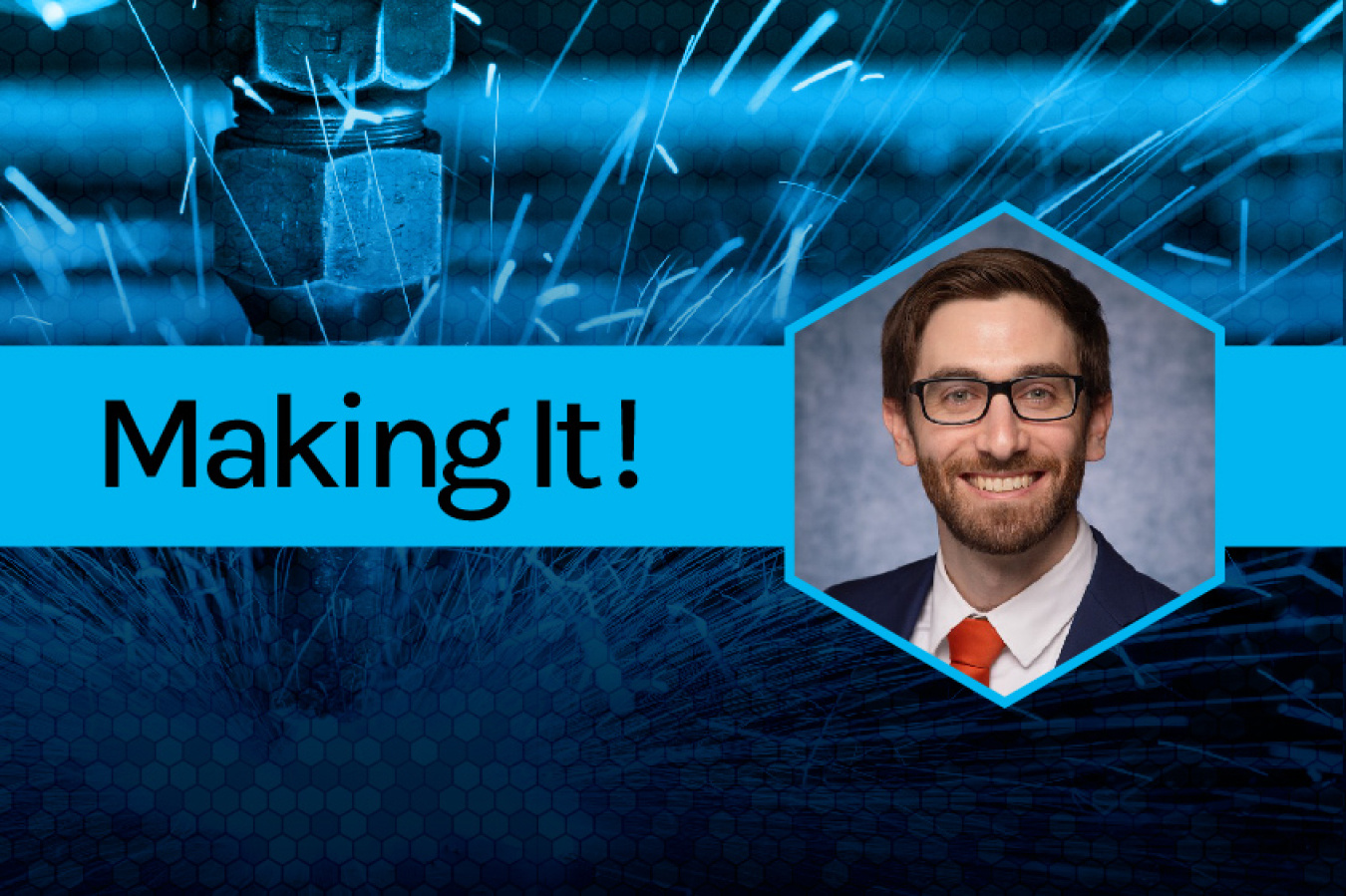
As a kid, he and his three older siblings spent what could have been lazy summer days building with all kinds of pop-art-colored plastic rods, bricks, and other construction bits. Once, the skilled sibling squad assembled a functional skateboard. But, true to Guttag’s “What’s next?” philosophy, they always wanted to go bigger. Their grandest build was a life-size poker table with matching chairs.
“What’s next?” was Guttag’s mantra all through school, too. He didn’t always know exactly what he wanted to do; instead, he chased his interests into new territories. A love of math and science led him to mechanical engineering. (“Seemed like a utilitarian, jack-of-all-trades space,” Guttag said.) Later, he took a liking to research, so graduate school seemed like a logical next step.
Making It!
AMMTO’s Making It! series spotlights the fresh perspectives of our fantastic fellows, who are making next-generation materials and manufacturing processes possible for our clean energy future.
But then, one dull mid-pandemic day during his first job out of graduate school, Guttag finally knew exactly what his next step needed to be—he just didn’t know how to get there.
“I wanted to work on bigger problems and help the world,” Guttag said. “And that made me think about climate change.”
Now, as an American Association for the Advancement of Science (AAAS) Science and Technology Fellow, Guttag can connect his mechanical engineering prowess to a new future in climate technology. He’s embedded in the U.S. Department of Energy’s (DOE) Advanced Materials and Manufacturing Technologies Office (AMMTO) where he’s learning all about how stuff gets made—and how things like clean energy technologies can best be recycled or reused to extend a product’s life cycle.
So, really, he’s still asking, “What’s next?” Except, now, he’s thinking specifically about the country’s manufacturing facilities.
“I wanted to get into clean energy, climate, and climate tech and this fellowship is a complete crash course,” Guttag said. “There’s no better way to come up to speed than immersing yourself and having access to people at DOE and industry who have been doing this for a long time.”
In this Q&A interview, Guttag shares advice for others who might want to make a big career pivot, discusses which sports he can’t give up, and explains how he’s helping others turn their grand ideas into reality. This interview has been edited for clarity and length.
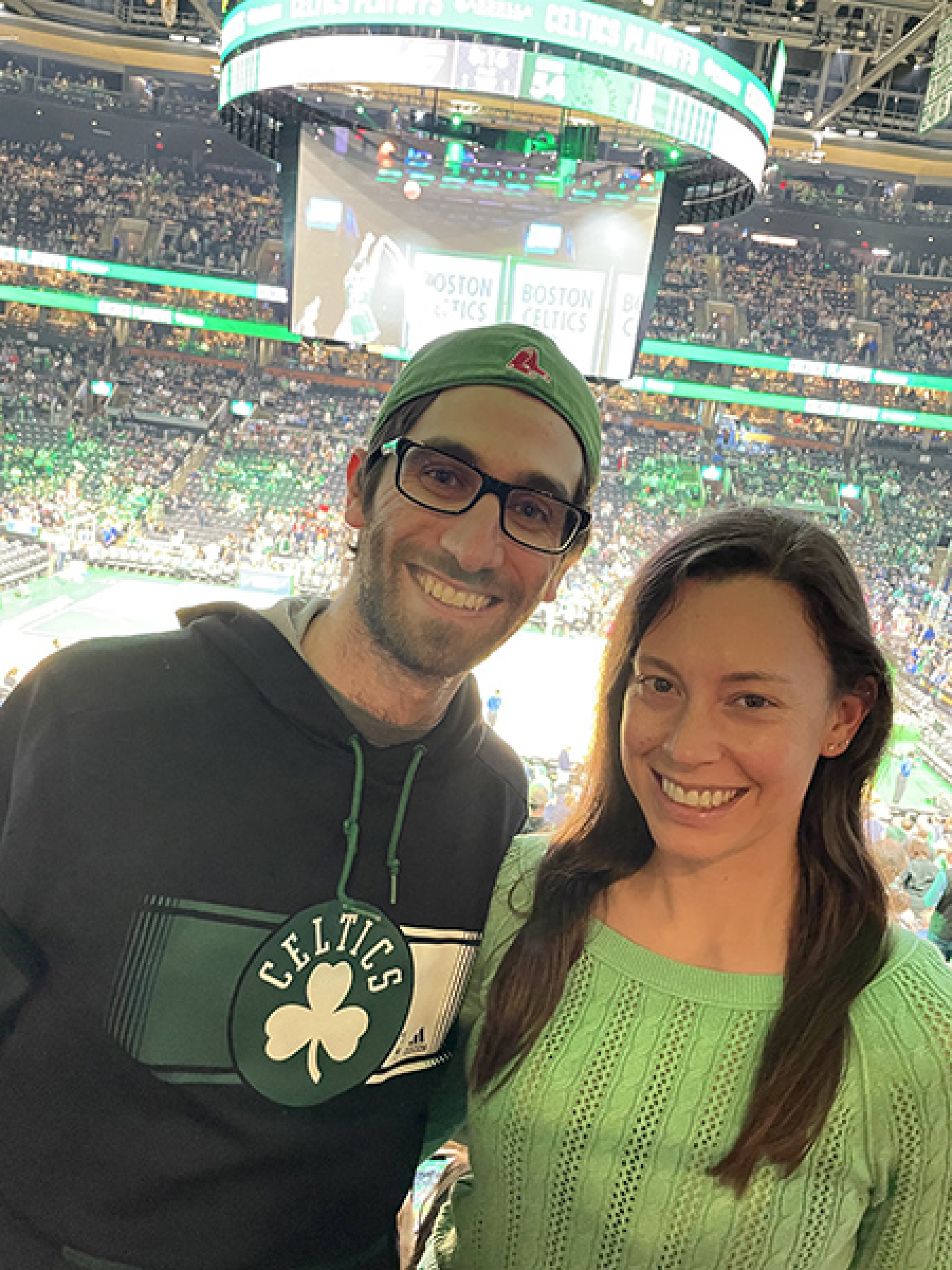
Mark Guttag is a big Boston sports fan and was thrilled the Celtics won another championship in 2024. (His fiancé, pictured here, is not a Boston sports fan; she’s from New York).
How did you end up in mechanical engineering?
I grew up in the suburbs of Boston. Both my parents have doctorates in computer science. We’re kind of an academic family. I didn’t really know what I wanted to do with math and science, but mechanical engineering seemed utilitarian, so I started on that track as an undergrad. Even then, I wasn’t exactly sure what I wanted to do. But I liked research, so graduate school was the logical next step.
At the Massachusetts Institute of Technology, I joined a mechanical engineering lab working at the intersection of materials and structural mechanics. But when my advisor left, I switched to another mechanical engineering lab focusing on aerodynamics and structural mechanics and did a lot of wind tunnel experiments. But I still didn’t know exactly what I wanted to do. You’re probably picking up on a trend. It was a lot of, “What's next? Let me open as many doors as I can."
What door did you open next?
After graduate school, I did a short postdoc in Switzerland. Then I came back to Boston and took a job as an engineering consultant at a company where I focused primarily on failure analysis around litigation. If somebody got hurt on a piece of machinery and sued, we were hired as expert witnesses to do an investigation. Was this a design defect, manufacturing defect, or user error?
“What's next? Let me open as many doors as I can."
Why did you end up wanting to shift to climate change research?
I did that job for about five years and learned a lot about how machines, tools, and equipment work. Then when COVID hit, I had a moment where it just hit me. "Why am I doing what I’m doing?" I really liked the people I worked with and the technical challenges. But I wanted to work on bigger problems and help the world. And that made me think about climate change.
But you had no background in climate change, right? What was your plan?
I talked to people in the field, who said, “You seem like you could be good at this. But most businesses are not in the practice of hiring people that don’t have experience.” But the AAAS fellowship was like, “We just want smart people who want to make a difference.” It seemed like a great way to make a radical pivot. So, I went through the application process and homed in on DOE and then AMMTO. Now, I work across the whole portfolio and can get a breadth of experiences.
What’s it been like to work at AMMTO?
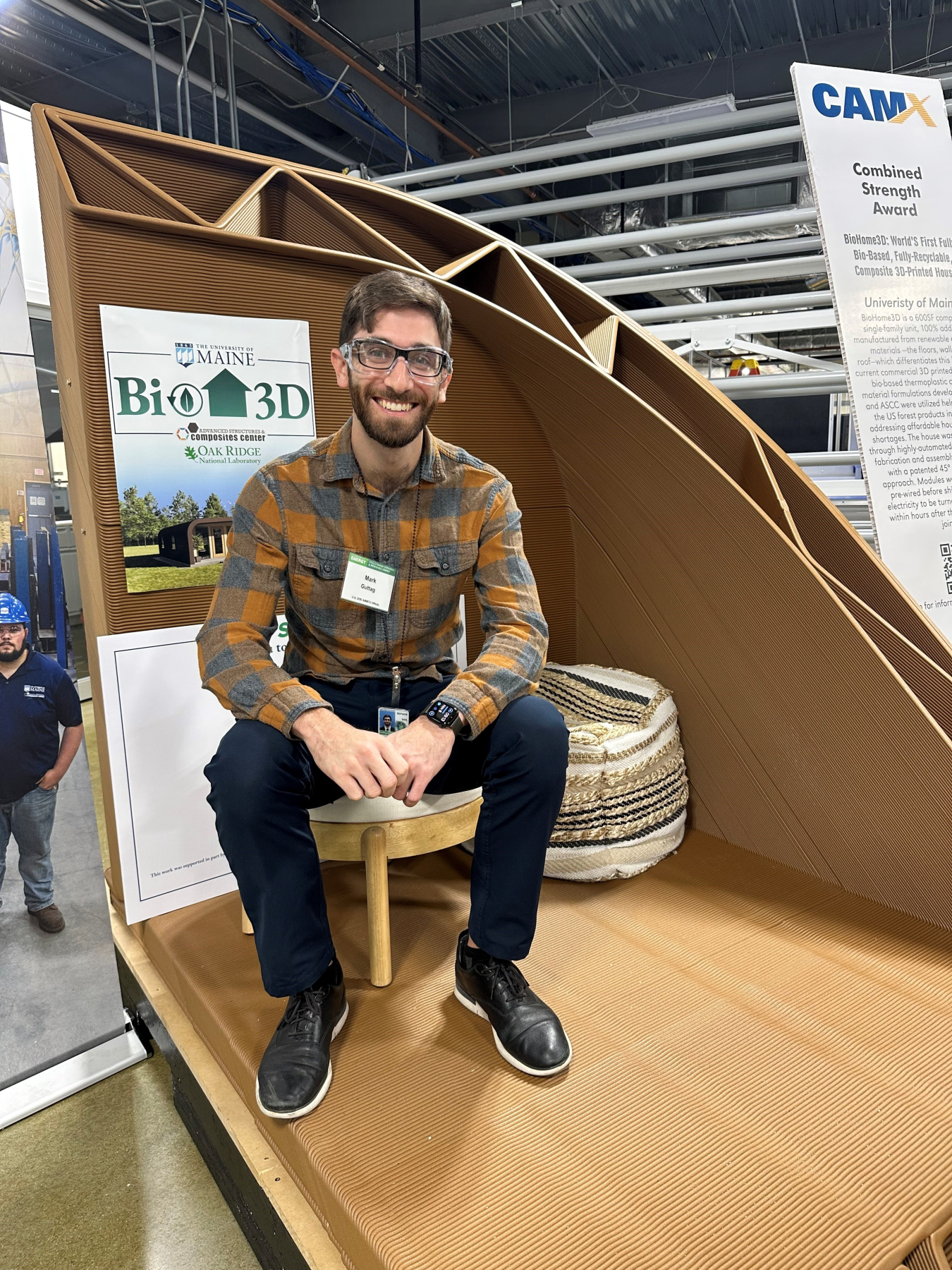
Early on, I didn’t know what I was doing. But then I got a chance to see what happens across the office and latched onto the flexibility of working on so many different things. With LEEP, the Lab-Embedded Entrepreneurship Program, for example, I support other people who have great clean energy ideas to go from research to commercialization. And I get to be part of discussions that shape the direction of the office. It’s a cool position to be in, hearing how people think the office can have an impact.
Is there anything you’ve learned at AMMTO that surprised you?
I knew nothing about government other than what I learned in high school. And at my fellowship orientation it was made very clear that what I learned is not how government actually works. A lot of people outside government said, “Oh, you’re going to get that sweet government gig and punch the clock.” That’s not at all what it’s like. The people here work just as hard as in private industry. I also didn't realize how many Ph.D.s there are here. I thought I would be the scientific expert in the office, but my somewhat generalist background doesn’t stack up to the specific technical expertise other staff have. And everybody is here because they want to do good.
You also lead AMMTO's Big Ideas Competition, right?
Yeah, that’s a ground-up idea-generation competition. Instead of people in leadership determining the things we need to prioritize, anybody from the office can propose ideas. It can’t be like, “We should have coffee on Tuesdays.” It has to be like, “We have to address this massive gap.” Eventually, some of the ideas become reality as key parts of AMMTO’s portfolio.
What excites you most about the future of materials or manufacturing?

In my last job, I spent time in manufacturing and production plants doing failure analysis or safety audits, so I had a little bit of experience. But being here and learning how things go from ideas to production and how we can shore up manufacturing to secure supply chains, I think, is really, really valuable. Manufacturing batteries is one of the hot things our office works on, but the details of things like battery chemistries often go over my head. Still, I really enjoy learning about what we need to do to develop and deploy the next generation of clean energy technologies.
We’re also trying to develop manufacturing processes that are versatile and can be adapted and evolved. And then critical materials—I didn't realize they’re in everything, all the stuff we need for modern life. And it’s important to see how the supply chains work: where the materials come from, how some can be recycled or reused, and how all these things are interconnected.
In an ideal world, what would you most hope to accomplish?
I want to make a positive impact on climate change. That’s a hard thing to do. But we can help advance clean energy technologies that will help with climate change mitigation and adaptation. And part of that is getting things from early-stage ideas to the market. I don't know where I fit into that chain, but I want to be part of the process, so I can help technologies have a positive impact.
What advice do you have for folks who might want to pursue a career in clean energy?
Don’t be afraid to make a pivot and try something new. Being curious is the key thing. It’s not that I wasn't fulfilled in my last job. I just realized that I wanted to do more mission-driven work. And that led me to AMMTO. Change is scary, but I’m super happy that I’m here.
I want to make a positive impact on climate change. That’s a hard thing to do. But we can help advance clean energy technologies that will help with climate change mitigation and adaptation.
Relevant News
-
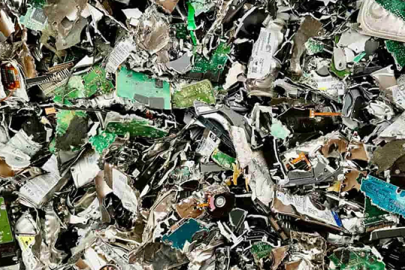 Teams with innovative ideas to reduce electronics waste compete to win prizes.
Teams with innovative ideas to reduce electronics waste compete to win prizes. -
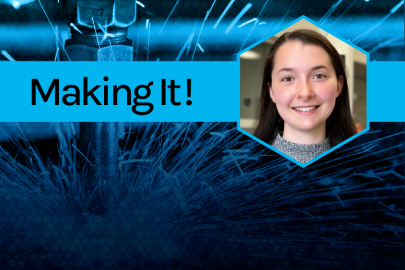 For as long as she can remember, Emilie Lozier has found comfort in science. Now, she applies that same scientific curiosity to tackling energy technology and workforce challenges for a cleaner, greener future.
For as long as she can remember, Emilie Lozier has found comfort in science. Now, she applies that same scientific curiosity to tackling energy technology and workforce challenges for a cleaner, greener future. -
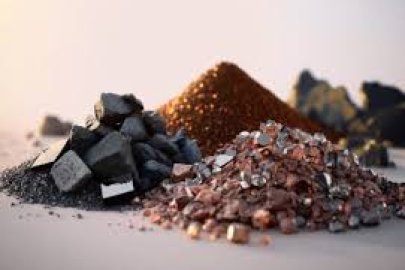 The Critical Materials Innovation Hub announced up to $10 million to accelerate the early-stage technology research and development necessary to reduce material criticality for energy innovations requiring critical materials.
The Critical Materials Innovation Hub announced up to $10 million to accelerate the early-stage technology research and development necessary to reduce material criticality for energy innovations requiring critical materials. -
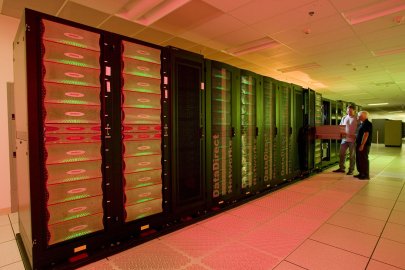 Investment includes a new $3.4 million funding opportunity and $4 million awarded to 10 projects across 8 states.
Investment includes a new $3.4 million funding opportunity and $4 million awarded to 10 projects across 8 states. -
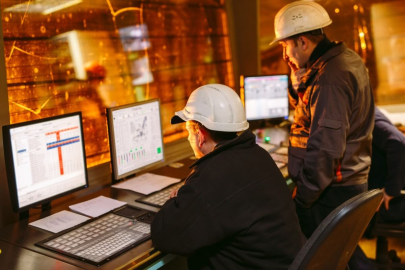 AMMTO is especially interested in funding research in pursuit of materials recovery and reuse systems, smart manufacturing and energy-efficient microelectronics.
AMMTO is especially interested in funding research in pursuit of materials recovery and reuse systems, smart manufacturing and energy-efficient microelectronics. -
 Happy belated Nanotechnology Day! Nanotechnology is the manipulation and manufacturing of materials and devices on the scale of atoms or small groups of atoms.
Happy belated Nanotechnology Day! Nanotechnology is the manipulation and manufacturing of materials and devices on the scale of atoms or small groups of atoms. -
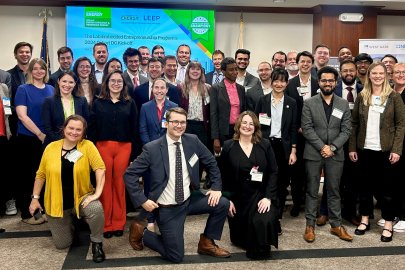 DOE’s Lab-Embedded Entrepreneurship Program (LEEP), managed by AMMTO, welcomed its 2024 cohort to its headquarters in Washington, D.C. to kick off their two-year fellowships
DOE’s Lab-Embedded Entrepreneurship Program (LEEP), managed by AMMTO, welcomed its 2024 cohort to its headquarters in Washington, D.C. to kick off their two-year fellowships -
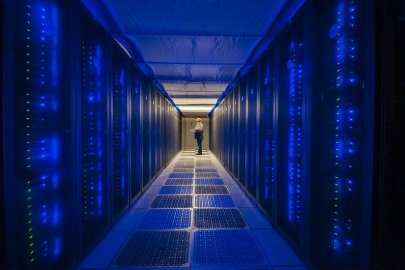 Look out for a funding opportunity from the AMMTO-sponsored High-Performance Computing for Manufacturing program. Coming later this fall!
Look out for a funding opportunity from the AMMTO-sponsored High-Performance Computing for Manufacturing program. Coming later this fall! -
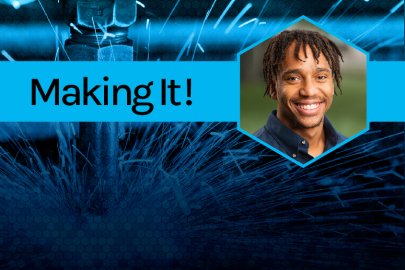 Jon-Edward Stokes is Making It! In a Q&A interview, how his shifted his academic focus from English to science and what gives his career purpose.
Jon-Edward Stokes is Making It! In a Q&A interview, how his shifted his academic focus from English to science and what gives his career purpose. -
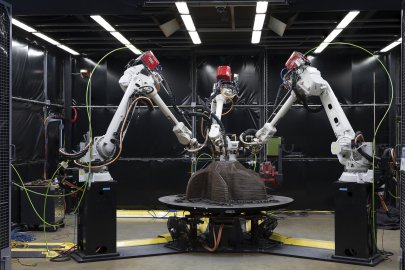 Check out the winning projects funded by AMMTO. Congratulations to the winners!
Check out the winning projects funded by AMMTO. Congratulations to the winners!
Get the latest Making It! profile and other advanced materials and manufacturing news in your inbox.

